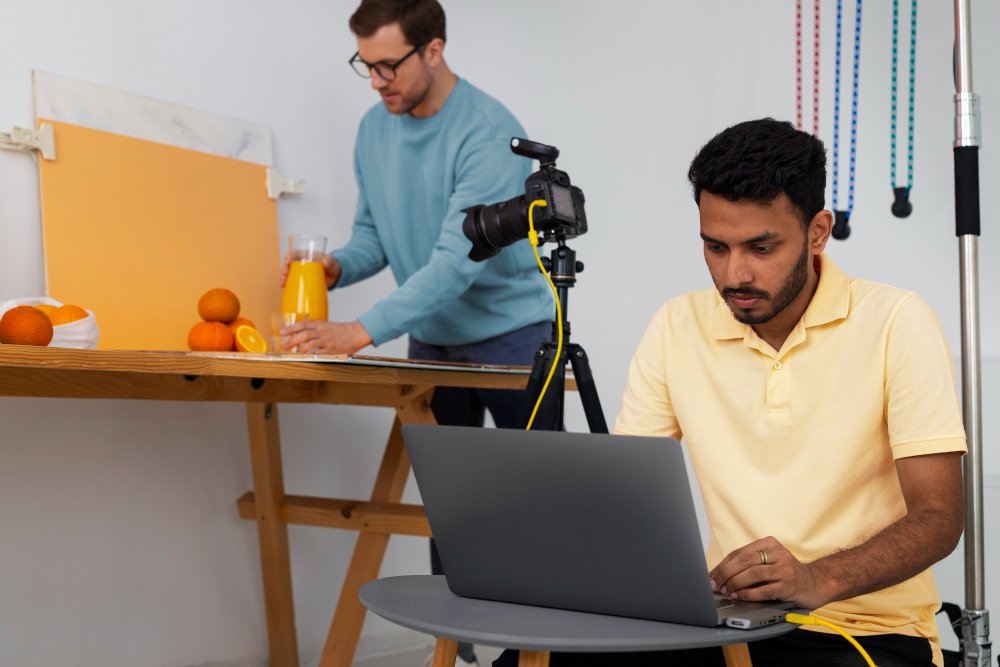Introduction
Step 1: Know Why and Who
All successful video content starts with clarity. Ask yourself:
-
Who is going to watch this video I’m making?
-
What do I want them to feel, know or do?
The intended audience of your video informs its tone, style and content. For instance, a product demo aimed at professionals may call for a more polished style, whereas the video for social media that you are aiming at Gen Z might require humor and fast pacing.
Step 2: Craft a Strong Script
Your script is the heart of your video. Even if you’re making an informal vlog, using the roadmap ensures that your content is both clear and compelling.
Tips for writing:
-
Hook early: Capture attention by the 5–10 second mark.
-
Be short and to the point: Utilize straightforward language.
-
Incorporate story lines: Place your message into the construct of a story with a beginning, middle and end.
-
Call to action (CTA): Remember to encourage your viewers for their next steps whether that’s subscribing, sharing, purchasing or learning more.
Step 3: Plan the Visuals
A script is half the story — it’s your visuals that bring it to life. This goes for your environment, camera angles, lighting, atmosphere — everything.
-
Select the appropriate background: Make sure it is related, but not too busy.
-
Lighting can be important: If you have natural light coming in, then great; if you also use a ring light or a softbox light, it’s even better.
-
B-roll footage: Additional clips (such as close-ups of products, behind-the-scenes shots or reaction shots) make a video more interesting and help keep viewers engaged.
Step 4: Quality Audio Is Key
Viewers can overlook shaky picture, but audio is a deal breaker. Get a good microphone that has little to no background noise. Clear sound helps your audience to stay engaged and makes your video seem professional.
Step 5: Shoot with Intention
When filming, remember:
-
Steady your shots: Whenever possible, shoot from a tripod.
-
Frame properly: Use the rule of thirds to keep things balanced.
-
Lean into the camera: Talk as you would to a friend.
Step 6: Edit for Engagement
The magic happens in editing. This is your opportunity to consolidate the story, focus on the highlights and keep the energy percolating.
-
Cut out unnecessary pauses.
-
Include captions for accessibility and more effective learning.
-
Employ music and sound effects judiciously — they should serve to enhance, not overpower.
-
Add transitions and overlays to give the video a more exciting feel.
Step 7: Optimize for Platforms
There are rules to succeed on every platform.
-
YouTube: Storytelling and tutorials resonate well with longer videos (8-12 mins).
-
Instagram/TikTok: Snappy, fast, vertical videos hook people.
-
LinkedIn: Professional and educational content stands out here.
Always make your video to fit where it will be shared.
Step 8: Test and Improve
The last step is to monitor how your video is performing. Check out metrics such as views, watch time, engagement rate and conversions. These are the things you learn from that help make your next video even better.
Conclusion
You do not generate attention-grabbing video content by accident. It takes planning, a good script, powerful visuals and conscious editing. By taking the necessary step-by-step steps, you can transform your ideas into a video that isn’t just occupying space online but one which truly connects with your audience.
Remember: each video is a chance to share your narrative, touch people and extend your brand — from script to screen.


